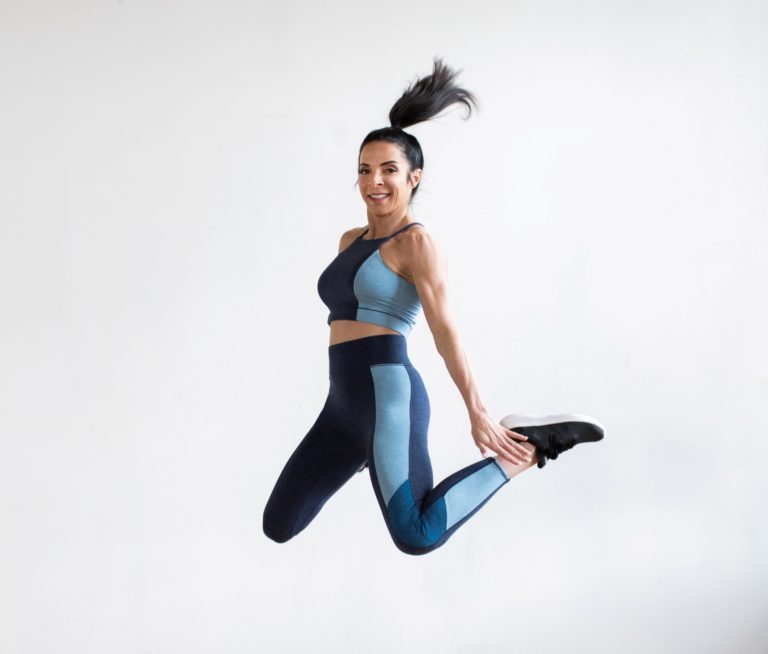
5 Ways to Burn More Fat During Workouts

Get access to everything we publish when you
sign up for Outside+.
There’s no magic shortcut to changing your body composition. No matter how you approach your goals, it takes hard work and time to reach them. But if fat loss is one of your training objectives, the good news is there are some ways you can tweak your existing workouts to accelerate your progress.
We tapped Mike Ranfone, CSCS, founder of Ranfone Training Systems, for his training tactics to kick up the fat burn in any workout you want to take to the next level.
-
Complement Your Weighted Lower-Body Training
One way to instantly ramp up calorie burn during a traditional weight workout is to intersperse bouts of plyometric or cardio activities in between your regular sets.
Ranfone’s favorite pairings start with a compound exercise followed by a complementary bodyweight movement that either focuses on the agonist (same) or antagonist muscle group.
“For example, performing a set of back squats and then immediately jumping into a set of alternating bodyweight lunges, or barbell Romanian deadlifts paired with bodyweight squats,” he says.
Just make sure you’re giving yourself enough of a rest period between your sets to fully catch your breath and maximize your performance on the lifts — a period which could be anywhere from 60-120 seconds, depending on the intensity of the exercise.
“Especially when it comes to lower-body training, secondary exercises shouldn’t impede the effectiveness of the main lift, since there’s a higher risk of injury from being in an overly fatigued state,” Ranfone points out.
-
Give Your Upper Body a 1-2 Punch
While peppering exercises into your lower-body workouts should be more strategic, you have more leeway when it comes to incorporating plyometrics and aerobic movements into your upper-body sessions.
“The upper body is made up of smaller muscle groups compared with the lower body, so it lends itself to less recovery time and therefore, more options,” Ranfone says. “You can pair a weighted lift with a bodyweight or smaller muscle counterpart — like a dumbbell bench press and push-up, or a pull-up and biceps curl, as two examples. But you can also try some lower-intensity, lower-body movements in supersets to keep your heart elevated and drive more of a fitness component: Think jumping jacks, bodyweight leg movements and jump rope.”
-
HIIT Your Rest Periods Right
High-intensity interval training (HIIT) has a place in effective training routines, but many people make a critical mistake when incorporating it, according to Ranfone.
“The number one flaw on the execution side that diminishes HIIT’s effectiveness is not resting long enough,” he points out. “Regardless of medium — bike, run, rower, or other option — using an objective output measure like MPH, watts, etc., to gauge your intensity over a specific time interval can be helpful in determining the appropriate rest intervals for your workout. Depending on your fitness level and output during those intervals, rest ratios should usually be 4 to 6 times the length of the work interval, so that you can maintain the pace throughout the high-intensity intervals.”
In other words, if you do an all-out sprint on the bike for 20 seconds, your low-intensity recovery period should be anywhere from 80 to 120 seconds. If not, you likely won’t be able to keep the intensity high enough as the workout progresses.
“As opposed to implementing HIIT into a workout or as a finisher, I tend to use it as a standalone workout to get the most benefit — and make sure to come in well-rested and focused to meet the physical and mental demands of this training style,” Ranfone says.
-
Get in Gear
An instant way to up the intensity of a cardio workout for anyone from novice to advanced trainees is to slip on a weighted vest for your session.
“Any time you’re increasing the demand of an exercise, you’re influencing the metabolic cost — including the calorie burn — of the exercise,” Ranfone explains. “By adding external load, you’re effectively changing even the most rudimentary activity, like walking, into resistance training.”
Although you can put it to use for anything from running to elliptical training to stadium stair work to plyometric drills, Ranfone finds a vest especially useful for lower-intensity training scenarios.
“That way, your acclimation period is expedited,” he says. “It’s deceiving the way even an extra 3 to 5 percent of your bodyweight can increase the challenge of familiar movements and exercises.”
-
Finish Light (and Fast)
To round out a weight workout, consider one or two lighter-weight, higher-cadence exercises — in other words, a more cardio-centric movement using a lighter weight that will elevate your heart rate and challenge your endurance — but not end in complete muscle failure.
“Since you’ll naturally be more fatigued at the end of the session, I default to selecting exercises that are less technically demanding and also carry less of an injury risk as opposed to something like an Olympic lift,” Ranfone says.
Options such as sled drags and pulls; weighted carries such as farmers, suitcase or rack; bodyweight exercises such as side lunges, push-ups and inverted rows; and direct core or arm movements all have a place in these longer duration, higher density sequences.
Published at Mon, 13 Dec 2021 08:15:05 -0800






